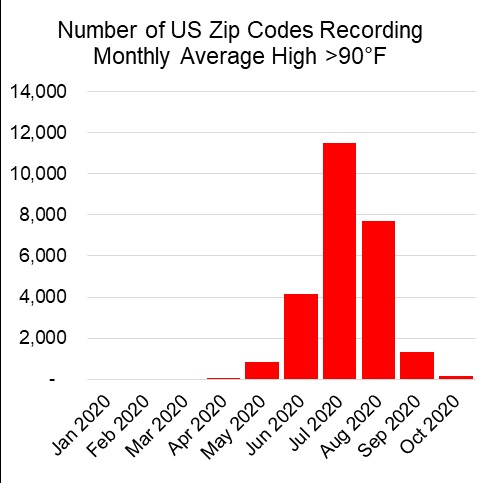Meal kit deliveries are booming currently, and new startups continue to enter the market and fill unique niches. However, as new startups emerge, establishing a competitive edge is vital. And believe it or not, past weather data can help meal kit delivery startups.
The connection might not seem that obvious until you dive deep into historical weather and start to see patterns emerge. Looking at the average temperatures by city can help optimize critical business operations and gain a competitive edge with customers.
How meal kit delivery startups can use past weather reports
A primary focus for meal kit delivery start-ups is ensuring that customers receive delicious food that’s ready to eat. However, if the food has entered the “danger zone” above 40 degrees Fahrenheit, it cannot be consumed. That leads to a domino effect because customers can’t enjoy the food, and therefore they won’t become recurring customers, and the startup has to bear all the costs.
It can be tricky, but with the right strategy and accurate past weather reports, meal kit delivery startups can avoid this entire scenario.
To avoid this scenario, meal kit service providers require the right kind of packaging insulation to keep the food cool during shipment. But not all packaging is created equal. And obviously, the greater the temperature, the more intensive (and expensive) packaging is needed.
How to optimize packaging material through past weather data
Paying close attention to average temperatures by city can shed some light on how best to optimize packaging moving forward.
Reviewing the historical temperatures of the zip codes you deliver to will help you: determine ahead of time where and when more protective packaging is needed and optimize the packaging process.
If you’re a newer meal kit company evaluating whether to service certain zip codes, knowing historical average high temperatures by month and zip code can tell you whether it makes economic sense. That past weather data can also shed light on how many customers you’ll need in the area to warrant expanding your serviceable market.
You can look at past weather data to understand summer trends and patterns that can help you make more strategic decisions and create a better customer experience overall by optimizing packaging material.
Understanding the average temperatures by city gives you unique insight into what customers might need at different points and ensures that you choose the correct kind of packaging. Rather than taking risks with food and temperature, you’ll create a secure and safer process, ensuring your meal kits get to customers without any issues!
Breaking down past weather data in more detail
The chart below shows the number of zip codes by month that historically have high enough temperatures that likely warrant more intensive packaging. Using data like average temperatures by city, you can start to better understand how heat-intensive certain areas can become and how you can optimize your packaging inventory for customers.
Looking at the past weather data, typically around one-fourth of all US zip codes experience very high temperatures in the Summer months. Knowing which of your serviceable zip codes are among these heat-intensive zip codes can help you estimate in advance how much high-grade packaging you’ll need.
You can also look at past weather data to chart peak temperatures in serviceable areas and add further value to your meal kit delivery, such as adding beverages and cold foods and running promotions and sales on those items around those times.

Ultimately, having access to past weather data allows meal kit delivery startups to optimize packaging inventory and start making smarter business decisions across the customer experience. Having an accurate idea of average temperatures by city can be a significant advantage as you scale your business and can help in creating a fantastic customer experience consistently.







